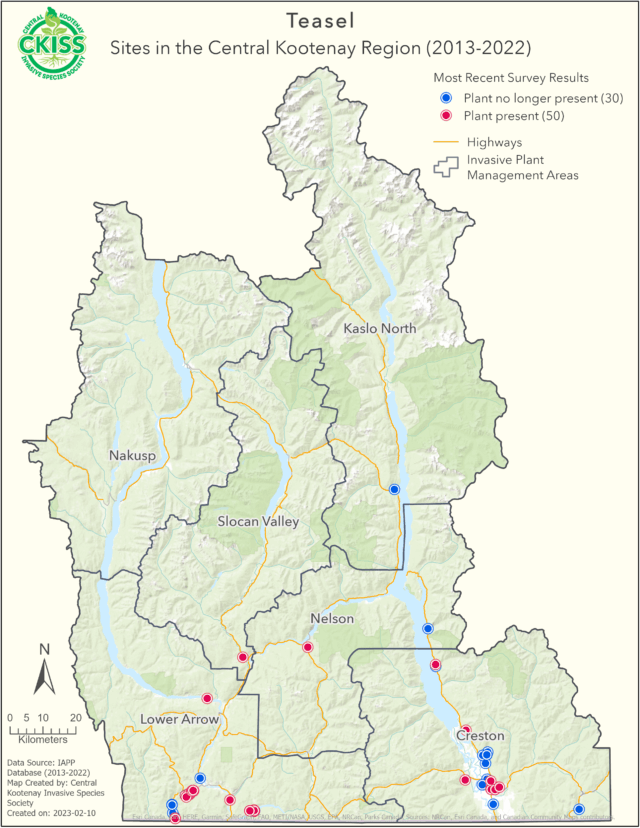Dipsacus fullonum
Description
- Teasel grows up to 7 feet tall on a prickly, branched stem.
- Leaves are thick where attached to the stem and taper to a point.
- Flowers are clustered into egg-shaped heads with spikes on top, and sharp bracts below the cluster, blooming from June to September.
- The plant grows in open areas, often on moist sites.
Introduction and spread
- The heads of this plant were historically used to card woven wool, so may have been imported to North America from Europe or northern Africa for this purpose.
- The flowers are also sometimes used in decorative arrangements.
- Each plant can produce up to 34,000 seeds, and they have a very successful germination rate so populations of the plant can establish rapidly.
- The seeds can easily be dispersed by water, animals, human activity, or mowing the plants after they have produced seeds
- Seeds remain viable in the soil for up to two years.
Status in the CKISS region
- Teasel is currently classified as Eradicate on the CKISS Annual Priority List.
- Teasel is present in the CKISS region with a very limited distribution, therefore eradication is feasible.
- Please report any findings of this species immediately.
- CKISS is taking steps to monitor and manage teasel in our region.
- To learn more about how CKISS classifies and manages invasive species, see our Invasive Species Priority Lists page.
Integrated pest management options
- A small population of teasel plants can easily be dug up and disposed of securely.
- Be PlantWise to avoid growing teasel in your garden.
- For larger quantities, it may be more time effective to wait until the plant is flowering and cut the plants flush with the ground (plants cut above ground level may regrow so mowing or cutting higher is less effective).
- As seeds can remain viable in the soil for several years, treatment may need to be repeated for several years.
- Even if the plants have not yet set seeds, removed materials need to be disposed of securely as seed heads may continue to mature after being cut. All landfills within the RDCK and RDKB accept invasive plant species for free. Ensure your material is bagged in clear plastic bags and notify the attendant that you have invasive plant species. Plants must be identifiable through the bag. For more information please see the RDCK Resource Recovery Bylaw.
- Remember clean your equipment, clothing and boots after working on a site where teasel is present to avoid spreading the seeds.


